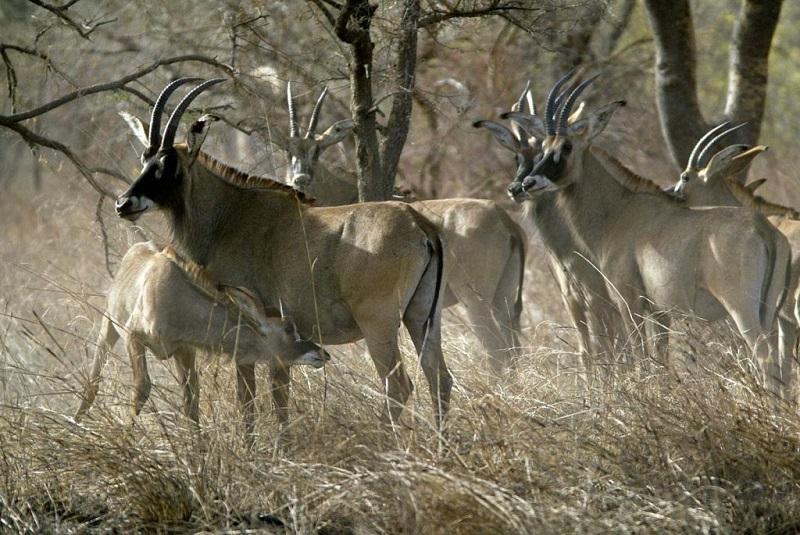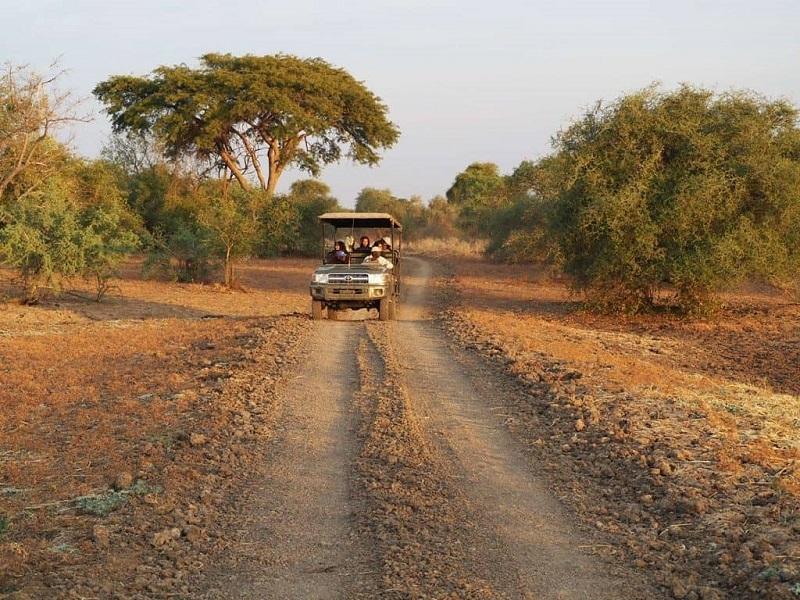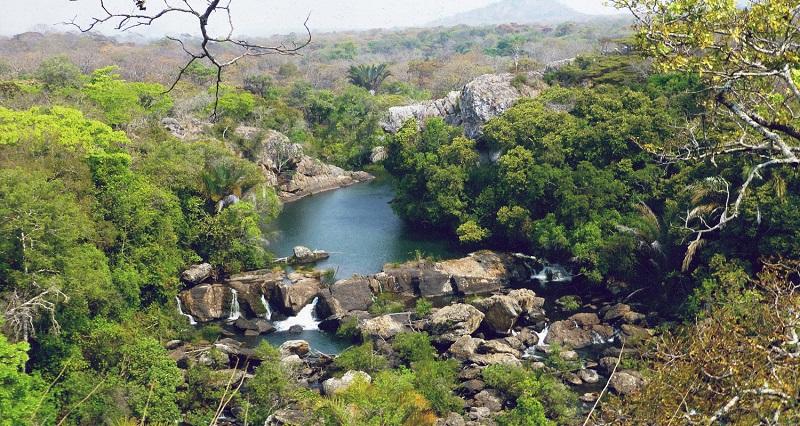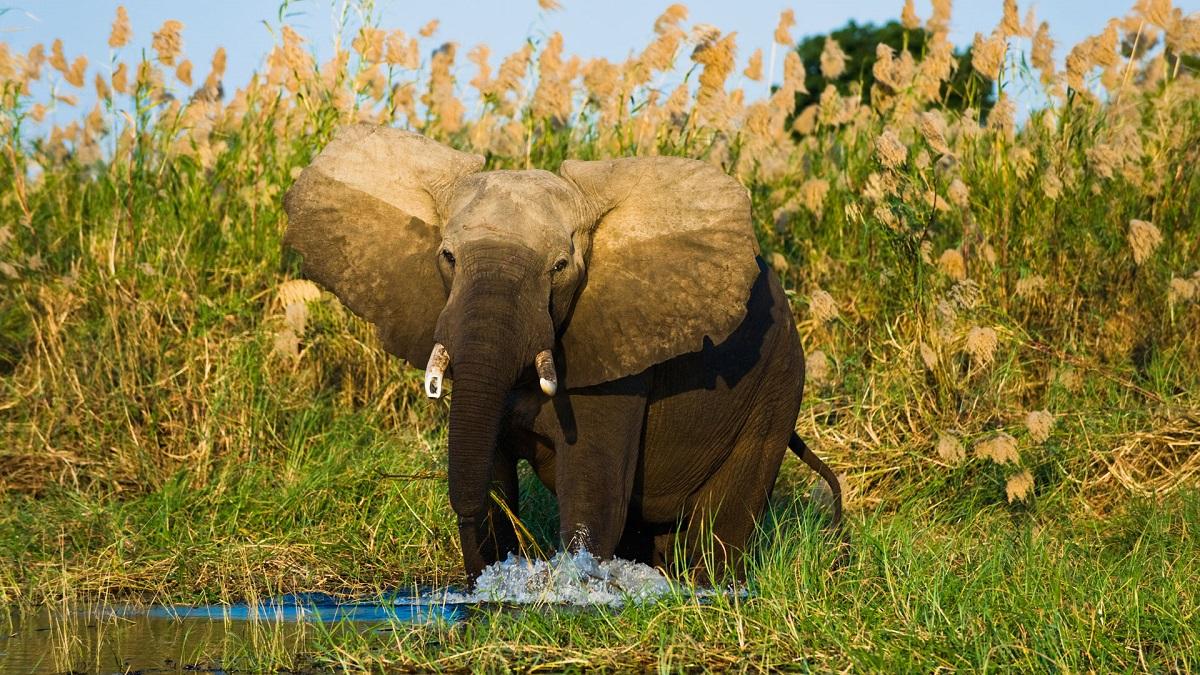Located in the northern part of Chad, Manda National Park is one of the country’s most significant natural reserves. Established in 1965, the park covers over 1,000 square kilometers of land and is known for its diverse landscapes, ranging from savannahs and woodlands to wetlands.
The park’s rich ecosystems are home to a variety of wildlife, including several endangered species. Its remote location offers visitors a chance to experience a unique and less-explored corner of Africa. Manda’s biodiversity and proximity to Lake Chad make it an important area for conservation efforts and a prime destination for eco-tourism.
Please Download Our Mobile App here
Overview of the Park
Manda National Park lies in the Borkou-Ennedi-Tibesti region, characterized by a mix of semi-arid climates and occasional rainfall. This climate supports diverse plant and animal species. The park is situated close to the western shores of Lake Chad, a significant water body in the region.
This proximity to water makes Manda a crucial stop for migratory bird species and a haven for aquatic life. The park also holds archaeological significance, with evidence of ancient settlements and cultural sites scattered throughout. Its mix of habitats—from dense forested areas to open plains—makes Manda a vital sanctuary for both terrestrial and aquatic species.
Wildlife in the Park

Manda is home to a wide range of wildlife, including several endangered species such as the West African crocodile, the African wild dog, and various species of antelope. The park’s savannahs and woodlands are frequented by large herds of gazelles. The wetlands near Lake Chad attract numerous bird species, including the threatened white pelican and several types of storks.
Mammals like lions, leopards, and cheetahs also roam the park’s vast expanse, though these animals are more difficult to spot due to the park’s dense vegetation. The park’s flora includes a variety of acacia and baobab trees, adding to the park’s rich biodiversity and providing essential habitat for numerous species.
Best Time to Visit the Park
The best time to visit Manda National Park is during the dry season, from November to March, when the weather is cooler and the park’s roads are more accessible. This period is ideal for wildlife viewing, as animals gather around water sources, making them easier to spot.
The wet season, from April to October, transforms the park into a lush green landscape, but rainfall can make travel difficult, and some areas of the park may become inaccessible. The wet season is, however, a good time for birdwatching, as many migratory birds pass through the region. Visitors should plan their trips carefully to ensure they get the best experience possible based on their interests.
Getting to Manda National Park

Manda National Park is located about 400 kilometers from the capital city of N’Djamena. While the park is remote, it is accessible by car via the N’Djamena-Bongor road, which leads to the park’s entrance. However, the journey can be long, and travel through the region is best done in a 4×4 vehicle, as many roads are unpaved and rough.
There are no direct flights into the park, but visitors can fly into N’Djamena International Airport and then arrange local transportation to the park. It’s recommended to use a local guide or tour operator familiar with the area, as the park’s terrain can be challenging to navigate without proper knowledge.
Activities in Manda National Park
Visitors to Manda National Park can engage in a range of activities, including wildlife viewing, birdwatching, and cultural exploration. Safari tours are the main attraction, offering the chance to see wildlife like gazelles, crocodiles, and wild dogs. The park’s wetland areas provide excellent opportunities for birdwatching, especially during migration periods.
A guided tour can also include visits to archaeological sites within the park, where ancient rock paintings and relics from past civilizations can be found. Additionally, visitors may experience the park’s cultural significance by interacting with the local communities that live near the park, learning about their traditional lifestyles and customs. For more adventurous travelers, camping within the park offers an immersive experience in this pristine environment.
Park Fees at Manda National Park

Park entry fees vary depending on nationality and the type of visit. Non-residents can expect to pay an entrance fee of approximately $15 USD for adults and $5 USD for children. Local residents may enjoy discounted fees, typically around 1,000 CFA (roughly $2 USD) per adult.
Additional fees are charged for guided tours and special activities, such as cultural visits and overnight stays in the park. It’s advisable to contact the park administration or a tour operator ahead of time to confirm the exact fees, as they can change based on the season and special events.
FAQs
How far is Manda National Park from N’Djamena?
The park is around 400 kilometers from N’Djamena, and the journey takes about 7-8 hours by road.
What wildlife can I expect to see in Manda National Park?
Visitors can spot a variety of animals, including West African crocodiles, gazelles, lions, cheetahs, and wild dogs. Birdwatchers can also enjoy the sight of migratory birds like pelicans and storks.
Is Manda National Park safe to visit?
Yes, but due to its remote location, it’s recommended to visit with a local guide or tour operator who knows the terrain and can navigate safely through the park.
Conclusion
Manda National Park offers a unique and off-the-beaten-path adventure for nature lovers and eco-tourists. Its diverse wildlife, rich cultural heritage, and stunning landscapes make it an exceptional destination in Chad. Whether you’re interested in wildlife safaris, birdwatching, or cultural exploration, Manda offers a truly immersive experience in one of Africa’s most remote and less-explored corners.




